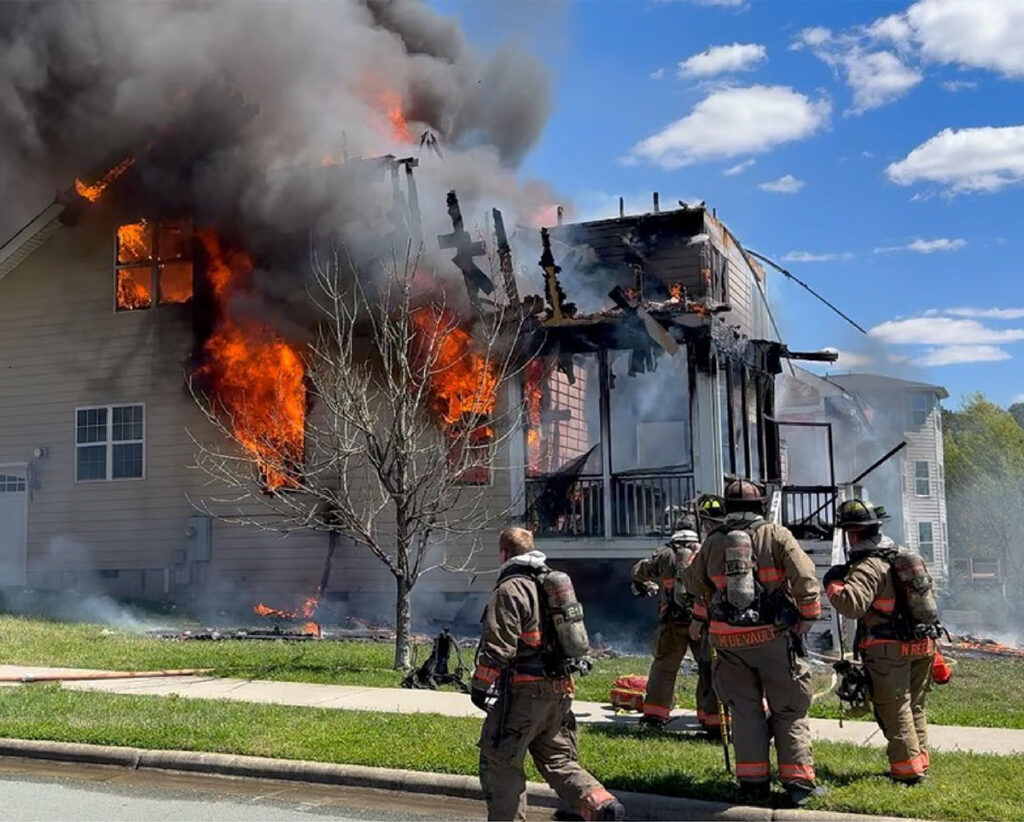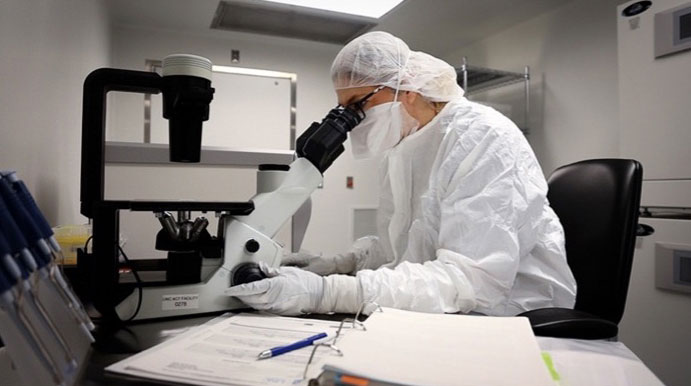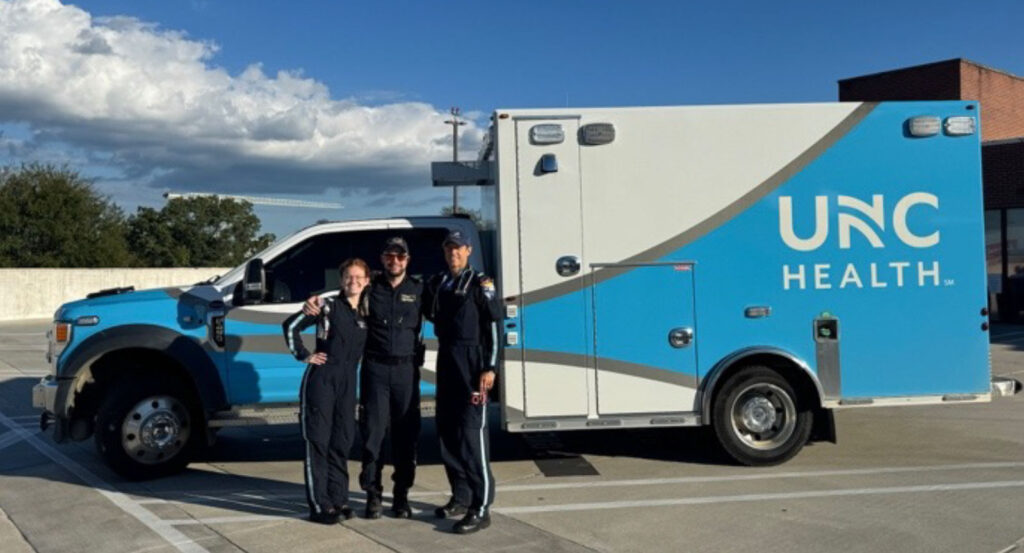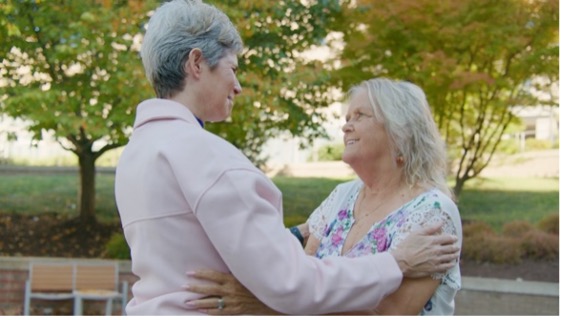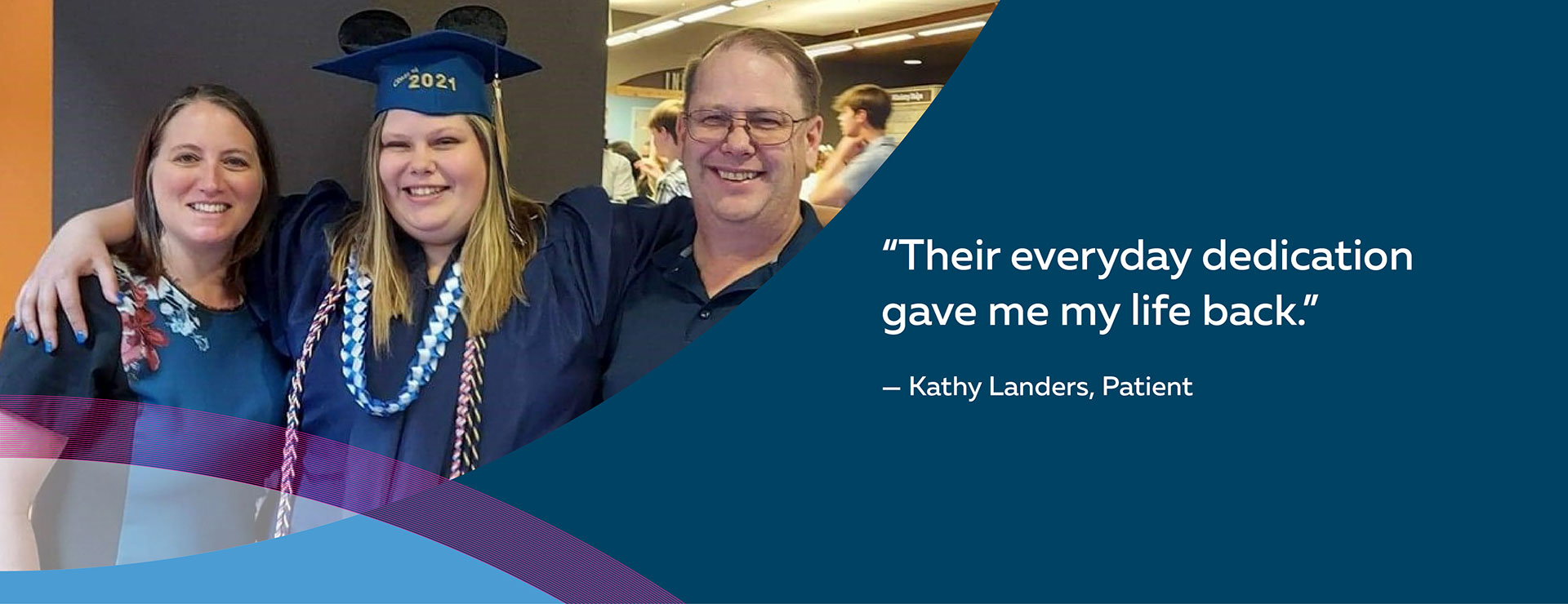
From Crisis to Calling: One Woman’s Journey to Support Stroke Survivors
Imagine you’re on a trip, sharing a moment with your family, when a loved one suddenly begins to slur their words or struggles to lift their arm. Would you recognize what was happening? Would you know what to do?
On a trip to Raleigh for her daughter’s archery tournament, Kathy Landers started showing these very symptoms. When her speech became garbled and her movements slowed, Kathy’s husband immediately noticed something was wrong. Years earlier, he had seen his grandmother experience similar symptoms during a stroke. That moment of recognition — and his quick action — saved Kathy’s life.
When Every Second Counts
Kathy was rushed to UNC Rex Hospital, where Tibor Becske, MD, a neurointerventionalist, performed a lifesaving thrombectomy to remove a blood clot from her brain. But the idea that she, an active and healthy 45-year-old, had a stroke, was hard to comprehend.
“My husband told me I’d had a stroke,” Kathy recalls. “I said, ‘Are you kidding me? I’m in my 40s!’”
But strokes don’t discriminate by age. They can affect anyone, at any time, and in Kathy’s case, it happened without warning.
She then had to confront reality while grappling with questions many might ask themselves: How could this happen to me?
Knowing the signs of a stroke and understanding how to act quickly, like Kathy’s husband did, can make all the difference in outcomes. Her experience is a powerful reminder: It’s never too early to pay attention to your health and be vigilant about recognizing the signs of stroke. You never know when that knowledge could save a life.
The Power of Care and Encouragement
Kathy credits her care team, including her physical therapist Margaret, for pulling her through her hardest moments during recovery.
“When I felt like giving up, Margaret became my lighthouse in the storm,” Kathy says. “Her encouragement reminded me I could keep going. Dr. Becske, in particular, is my miracle worker. Their everyday dedication gave me my life back.”
Kathy’s story is just one example of how healthcare teams make an impact on stroke survivors. Every day, healthcare professionals across the world help people recover, heal and reclaim their lives. Stay inspired and informed — sign up for the UNC Health newsletter to receive more stories of everyday greatness, health tips and updates delivered directly to your inbox.

Would You Recognize a Stroke?
Kathy’s story shows how swift action and care save lives. Now it’s your turn to try. Take our quiz below to test your knowledge and learn how to protect yourself and your loved ones.
True or False?
Correct!
Many strokes are preventable through lifestyle changes such as managing blood pressure, quitting smoking, eating a healthy diet and staying active.
True
Many strokes are preventable through lifestyle changes such as managing blood pressure, quitting smoking, eating a healthy diet and staying active.
Correct!
While the risk of stroke increases with age, strokes can affect people of all ages. This includes younger adults and even children, especially if they have risk factors such as high blood pressure or heart disease.
False
While the risk of stroke increases with age, strokes can affect people of all ages. This includes younger adults and even children, especially if they have risk factors such as high blood pressure or heart disease.
Correct!
Strokes often occur suddenly, with symptoms developing quickly, such as facial drooping, difficulty speaking or weakness in one side of the body.
True
Strokes often occur suddenly, with symptoms developing quickly, such as facial drooping, difficulty speaking or weakness in one side of the body.
Correct!
Even if a stroke victim is conscious and alert, they can still be in serious danger. Immediate medical attention is essential to prevent further brain damage.
False
Even if a stroke victim is conscious and alert, they can still be in serious danger. Immediate medical attention is essential to prevent further brain damage.
Correct!
While dizziness can be a stroke symptom, it’s not always related to a stroke. Other causes, like dehydration or a sudden drop in blood pressure, can lead to dizziness or lightheadedness.
False
While dizziness can be a stroke symptom, it’s not always related to a stroke. Other causes, like dehydration or a sudden drop in blood pressure, can lead to dizziness or lightheadedness.
Correct!
Smoking and excessive alcohol intake are major risk factors for stroke. Avoiding these can significantly reduce the risk of having a stroke.
True
Smoking and excessive alcohol intake are major risk factors for stroke. Avoiding these can significantly reduce the risk of having a stroke.
Correct!
While some strokes are preceded by warning signs, like transient ischemic attacks (TIAs), also known as ministrokes, many strokes come on suddenly with no warning.
False
While some strokes are preceded by warning signs, like transient ischemic attacks (TIAs), also known as ministrokes, many strokes come on suddenly with no warning.
Correct!
The FAST method is an easy way to react to stroke symptoms: Face drooping, Arm weakness, Speech difficulty and Time to call emergency services.
True
The FAST method is an easy way to react to stroke symptoms: Face drooping, Arm weakness, Speech difficulty and Time to call emergency services.
Correct!
Rehabilitation is essential for many stroke survivors. Therapy can help restore function, improve mobility and assist in speech recovery, depending on the severity of the stroke.
True
Rehabilitation is essential for many stroke survivors. Therapy can help restore function, improve mobility and assist in speech recovery, depending on the severity of the stroke.
Correct!
While stroke treatment is most effective when started within the first few hours, it’s still possible to receive care after 24 hours, though the chances of recovery may be reduced. Some interventions, like rehabilitation, can begin much later.
False
While stroke treatment is most effective when started within the first few hours, it’s still possible to receive care after 24 hours, though the chances of recovery may be reduced. Some interventions, like rehabilitation, can begin much later.
Related Content
See how powerful moments can shape amazing stories throughout our communities.
